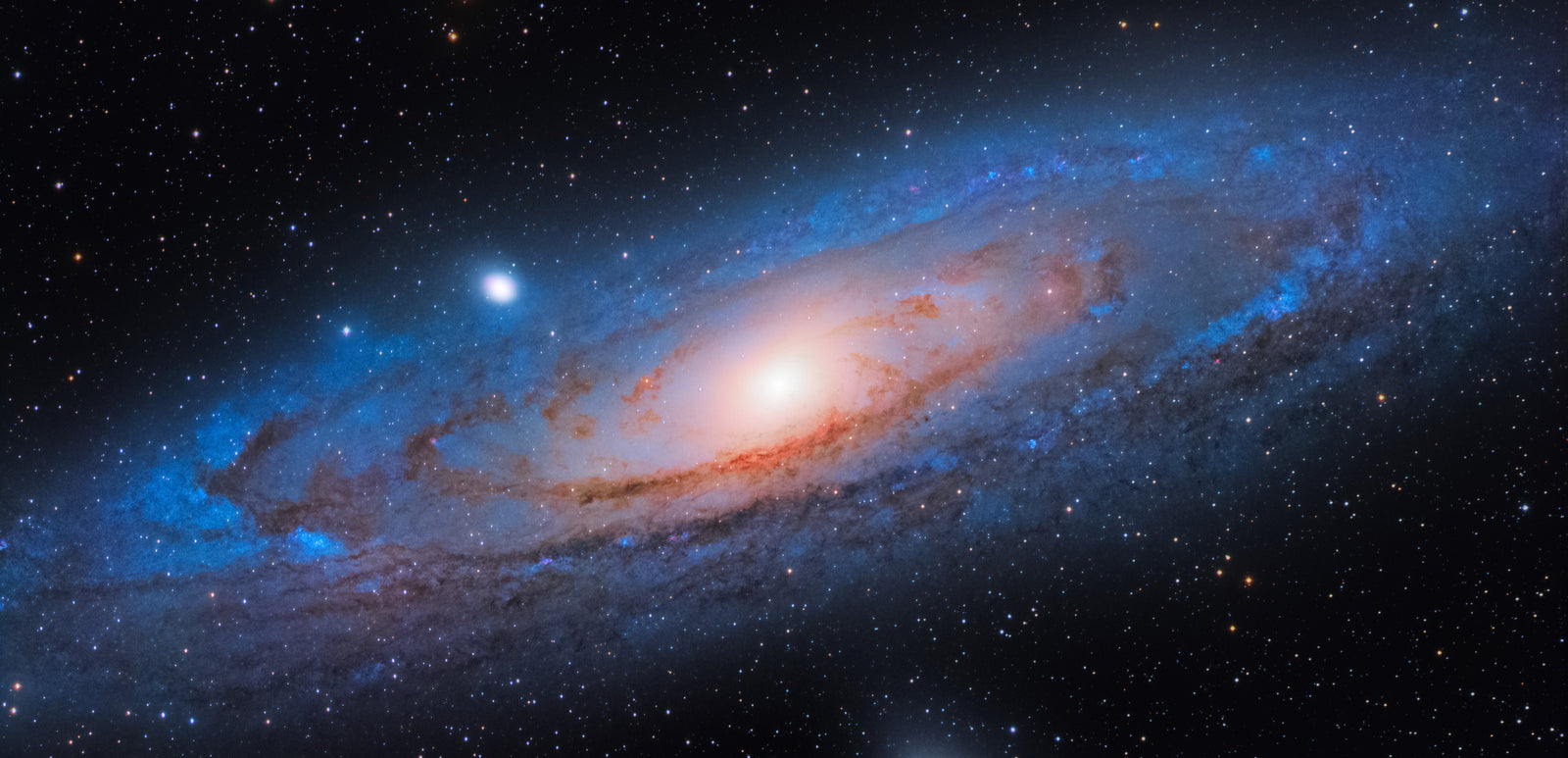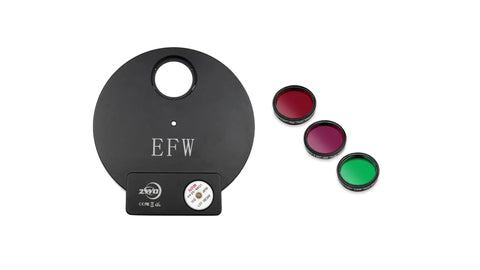Which camera is best for deep sky astrophotography?
The short answer: any of the latest cooled astronomy cameras are going to perform very well for deep sky astrophotography, but the right camera depends on what you’re trying to image, your budget, and what equipment you may already own.
The long answer: finding the right cooled astronomy camera for your setup will depend on a few different factors. These factors include:
- Whether you plan to image in color (beginner) or monochrome (advanced)
- What size image circle your telescope/corrector can cover, which will determine the largest sensor diagonal you can use
- What your pixel scale will be at your telescope’s focal length
- What your budget is
If you need help figuring out the answers to the above, our Sales team is always ready to assist you and recommend the right camera for your setup and needs. Click Here to Contact Us.
Which camera is better for deep sky imaging, a color or monochrome camera?
From a purely technical standpoint, monochrome cameras are inherently better than color cameras due to their sensor design. We'll save the "why" for a future blog post, but monochrome cameras produce a cleaner and slightly sharper image than color cameras can. However, monochrome cameras are more expensive, and they require a filter wheel/drawer plus costly filters to produce a color image.
Color cameras, on the other hand, can produce color images right out of the box. Although monochrome cameras still have the upper edge, color camera technology and astronomy filters have gotten so good in recent years that it can be difficult to tell the difference between two images made from each camera type.
If you're just beginning astrophotography, we recommend starting off with a color camera. If you're already an experienced astrophotographer, consider upgrading to a monochrome CMOS or CCD camera.
What is cooling and why is it good for deep sky astrophotography?
Camera sensors heat up over the course of long exposures, and that heat causes unwanted noise (like film grain) in digital images.
ZWO cooled cameras, like most dedicated deep sky astronomy cameras, use a cooling system in the form of a fan to radiate heat away from the camera sensor. By doing this, it can keep the camera sensor many degrees colder than the ambient air temperature, as much as -35ºC or more. Doing this drastically reduces the overall noise in the final image for a long exposure.
This is the main reason why a cooled astronomy camera has a significant advantage over a DSLR or mirrorless camera. For short exposures, cooling has less of an effect, hence why most DSLRs, mirrorless cameras, and planetary cameras do not need it.
How do I attach my camera to my telescope?
With ZWO cameras, attaching your cooled astronomy camera to your telescope is easy. All ZWO cooled cameras come with both M42 and M48 adapters for seamless attachment to most telescopes. Planetary cameras can attach via M42 connection, or you can use a 1.25" barrel to attach it into any 1.25" port. Guide cameras can attach to any 1.25" port, such as a 1.25" focuser, guide scope, or off-axis guider.
What is the correct back focus for ZWO cameras?
It's a common misconception that back focus is a requirement of the camera. In fact, back focus is a property of the telescope, or any corrective optic behind the telescope. That includes field flatteners, reducers, and reducer/flatteners. Check what the back focus is for your telescope or corrective optic, and then use spacers to reach that distance.
For many (but not all) telescopes, the back focus is 55mm. ZWO includes adapters with every cooled camera to reach 55mm of back focus, and you can find helpful charts on ZWO's website for each camera to find out what order to place the adapters in. You only need to purchase additional adapters or spacers if your telescope's back focus is different than 55mm.
If you're curious about back focus, you can read more about it in our helpful article here!
Are ZWO cameras compatible with other accessories?
ZWO cameras are designed to work great with other ZWO products. More specifically, the spacers that come with your cooled ZWO camera can be easily swapped out for a ZWO off-axis guider or ZWO filter wheels/drawers without changing the back focus spacing of your imaging setup.
The ZWO ASIAIR Pro is a smart control unit can be used to wirelessly control (via smartphone or tablet) your entire astrophotography rig, including the mount, your ZWO cooled camera or DSLR, your ZWO guide camera, and your ZWO electronic focuser. Although the ASIAIR Pro is only compatible with mainly ZWO products, it's an excellent way to capture your astrophotography data without needing to be outside or touching the telescope.

















